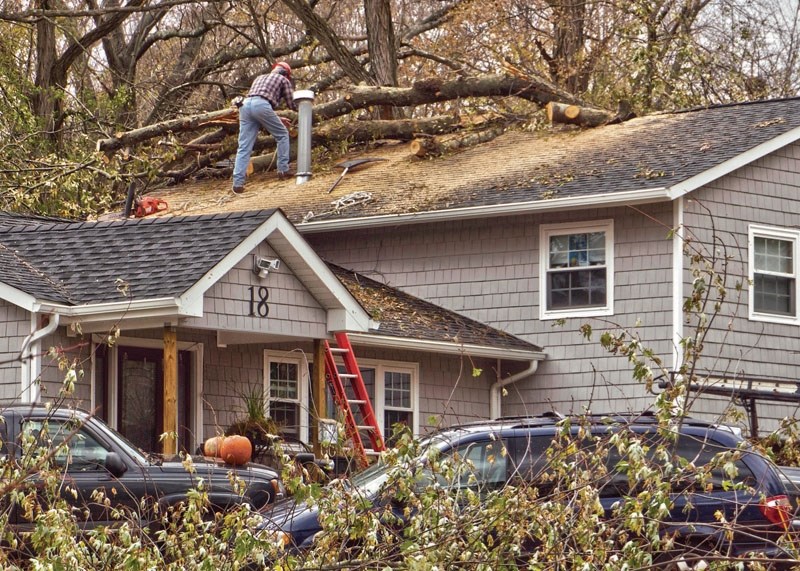Any given week, the news reports some new natural disaster, such as a wildfire, torrential storm or tornado, and all of these disruptive events have insurance implications for the individual and the economy.
Wildfires turned lives upside down in Fort McMurray and have threatened communities in B.C. just this week. Such disasters are a part of living on planet Earth, and experts expect such misery-inducing events to intensify in the future.
The Insurance Bureau of Canada, an industry advocacy and educational organization, predicts that by 2050, the incidence of lightning will increase by 20 percent in northern Alberta, triggering more wildfires, and it predicts severe winter storms will increase eight to 15 percent by mid-century. The cost to individuals and the economy will be significant. The 2013 floods in southern Alberta cost the economy five to six billion dollars, and the insurance industry paid out $1.8 billion in claims.
Along with stories of disaster inevitably come stories of people who learned that, even with insurance, all their losses were not covered for a variety of reasons. So what do consumers need to know about how to protect themselves when disaster strikes and to understand what disasters are, well, just unmitigated disasters?
Rob George, St. Albert branch manager of Drayden Insurance, says a comprehensive home insurance policy will cover losses from fire, windstorms, including tornados, and hail, but traditionally flooding wasn’t covered in Alberta policies.
Since the Calgary and area floods of 2013, insurance companies have revised their policies to reflect changing risk profiles.
“Sewer backup used to be considered the only risk people thought about and purchased coverage for. It was fairly basic. But the Calgary flood was probably the biggest event that has caused some of those changes,” George says.
“The word ‘flood’ was typically excluded in Alberta on homeowners’ policies. But most companies have come out with either an overland water or some limited flood coverage. But water is still the one where you will have the largest discrepancy in the claims area,” George says.
“The biggest difference from policy to policy is the deductible or special limits on coverage.” Clients can boost their coverage by paying more. Some do, some don’t.
And companies are always fine-tuning their risk tolerance.
“Insurance companies have gone to something called micro-rating,” George explains.
“Before you used to consider (water damage) protected or not protected. St. Albert could be considered one zone, or northern Alberta could be considered one zone. But micro-rating most typically use postal codes. Different regions of St. Albert could have different ratings.”
And each zone has its own risks.
“There are hail zones in Alberta, and those zones have a different rating.
“There are known areas that are now considered high-risk for water damage. So it’s not a matter of if those areas are going to flood again in Calgary. It’s a matter of when.
So insurance companies have said they’re not going to provide you with coverage, or they’re only going to provide you $50,000 of water damage coverage on your $750,000 house.”
Heather Mack, director of government relations at the Insurance Bureau of Canada, says the bureau sees confused policyholders looking for reasons why their insurers aren’t covering all their losses in a claim.
“We certainly hear from people surprised by the sub-limits on their policy, or time limits for evacuation costs that are in the policy, but perhaps they didn’t read it until they had to make a claim.”
Insurance policies include limits on various aspects of the coverage. Ft. McMurray evacuees with comprehensive home insurance could have expected their living expenses to be covered for two weeks, for example. The dislocation has been longer for everybody, and so clients would have been frustrated with that particular limit on their insurance.
Price is always front of mind in the insurance shopping process, but Mack explains that ensuring you have the coverage you actually need should be the primary focus. Researching companies for their reputation in handling claims should be a priority.
“People shop for price. We know that. But they really should be thinking about it the other way around. Thinking about the claims,” he said.
“Your insurance policy really is a claims service, so if the company doesn’t have a good reputation for claims, why are you buying it?”
George says the surest way to ensure that you’re properly insured is to review your policies regularly. Be certain of the limits on your policy. Standard coverage for sewer backup damage to a basement might be $30,000, but redoing and refurnishing a basement might cost you $75,000, so you’ll have to pay for that additional protection.
“For most people, price is important, but peace of mind is probably more important. Most people want to be sure they’re covered properly.”
Mack points out that home insurance premiums have risen in Alberta over the past few years, and there’s an explanation for that beyond insurance companies’ desire to increase their profit.
“Insurers will not adjust premiums based on one event, whether it’s a fire or a flood. But they do look at the overall long-term trends, and they have seen a trend going upward in Alberta for a good 10 years now.
“And now that insurers have that experience, they think that trend is going to continue of more and more severe weather and natural catastrophe events. And they may look at premiums to cover those claims costs.”




